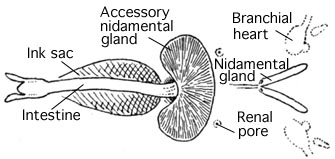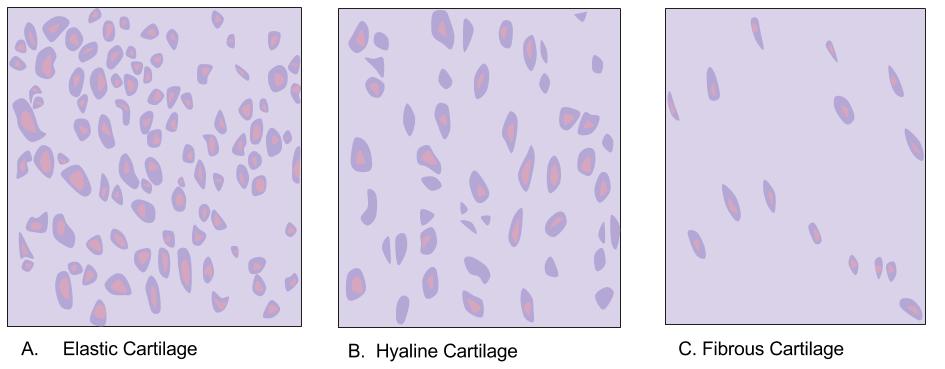|
Chiroteuthidae
The Chiroteuthidae are a family of deep-sea squid, generally small to medium in size, rather soft and gelatinous, and slow moving. They are found in most temperate and tropical oceans, but are known primarily from the North Atlantic, North Pacific, and Indo-Pacific. The family is represented by approximately 12 species and four subspecies in four genera, two of which are monotypic. They are sometimes known collectively as whip-lash squid, but this common name is also applied to the Mastigoteuthidae, which are sometimes treated as a subfamily (Mastigoteuthinae) of Chiroteuthidae. The monotypic genus '' Grimalditeuthis'' was once (and may still be) given its own family, Grimalditeuthidae. Generally speaking, chiroteuthids are not well represented by described specimens, because they are so often damaged during capture. Description The Chiroteuthidae are most notable for their unique paralarval stage, known as the doratopsis stage. Although morphology varies greatly within ... [...More Info...] [...Related Items...] OR: [Wikipedia] [Google] [Baidu] |
Chiroteuthis
''Chiroteuthis'' is a genus of chiroteuthid squid, comprising two subgenera. The hectocotylus is absent from all members of the genus; instead, a penis extending from the mantle opening is utilised. The genus is characterised by enlarged, lidded photophores present at the end of the tentacular club. Arms IV are both the longest and thickest, their membranes acting as sheaths to the retractable tentacles. Species ** ''Chiroteuthis'' sp. B2 **Subgenus '' Chiroteuthis'' ***'' Chiroteuthis calyx'' ***'' Chiroteuthis joubini'' ***''Chiroteuthis spoeli'' ***''Chiroteuthis veranyi'', long-armed squid ****''Chiroteuthis veranyi lacertosa'' ****''Chiroteuthis veranyi veranyi'' **Subgenus '' Chirothauma'' ***''Chiroteuthis atlanticus'' * ***''Chiroteuthis imperator'' ***''Chiroteuthis mega'' ***''Chiroteuthis picteti'' ****''Chiroteuthis picteti picteti'' ****''Chiroteuthis picteti somaliensis ''Chiroteuthis'' is a genus of chiroteuthid squid, comprising two subgenera. The hectocotyl ... [...More Info...] [...Related Items...] OR: [Wikipedia] [Google] [Baidu] |
Planctoteuthis
''Planctoteuthis'' is a genus of chiroteuthid squid comprising five species, occurring worldwide in lower mesopelagic to bathypelagic depths in tropical to temperate waters. It has been suggested that members of ''Planctoteuthis'' are neotenic, retaining characteristics of the doratopsis developmental stage. This is marked in the retention of the paralarval tentacular club, unique among subadult chiroteuthids. Members lack both photophores and a funnel valve. The genus was originally placed within the monotypic family Valbyteuthidae, under the name ''Valbyteuthis''. Similarities between the paralavae of ''Valbyteuthis'' and ''Chiroteuthis'' led to its inclusion in the family Chiroteuthidae. Eventually, ''Valbyteuthis'' was incorporated as a junior synonym of ''Planctoteuthis'', citing previous descriptions of the paralarvae. Species * '' Planctoteuthis danae'' * '' Planctoteuthis exopthalmica'' * '' Planctoteuthis levimana'' * '' Planctoteuthis lippula'' * ''Planctoteuthis ol ... [...More Info...] [...Related Items...] OR: [Wikipedia] [Google] [Baidu] |
John Edward Gray
John Edward Gray, Fellow of the Royal Society, FRS (12 February 1800 – 7 March 1875) was a British zoology, zoologist. He was the elder brother of zoologist George Robert Gray and son of the pharmacologist and botanist Samuel Frederick Gray (1766–1828). The same is used for a zoological name. Gray was Keeper of Zoology, keeper of zoology at the British Museum in London from 1840 until Christmas 1874, before the natural history holdings were split off to the Natural History Museum, London, Natural History Museum. He published several catalogues of the museum collections that included comprehensive discussions of animal groups and descriptions of new species. He improved the Zoological specimens, zoological collections to make them amongst the best in the world. Biography Gray was born in Walsall, but his family soon moved to London, where Gray studied medicine. He assisted his father in writing ''The Natural Arrangement of British Plants'' (1821). After being Blackballing, ... [...More Info...] [...Related Items...] OR: [Wikipedia] [Google] [Baidu] |
Paralarva
Paralarvae (singular: ''paralarva'') are young cephalopods in the planktonic stages between hatchling and subadult. This stage differs from the larval stage of animals that undergo true metamorphosis. Paralarvae have been observed only in members of the orders Octopoda and Teuthida. The term was first introduced by Richard E. Young and Robert F. Harman in 1988. Paralarvae usually spend an uncertain amount of time in the plankton and then typically descend to an adult habitat in the mesopelagic or bathypelagic zone. Their population abundance is dependent on the variation of mortality rates during the planktonic period. See also *Larva *Crustacean larvae Crustaceans may pass through a number of larval and immature stages between hatching from their eggs and reaching their adult form. Each of the stages is separated by a moult, in which the hard exoskeleton is shed to allow the animal to grow. The ... References Further reading *Bigelow, Keith A. "Age and growth in p ... [...More Info...] [...Related Items...] OR: [Wikipedia] [Google] [Baidu] |
Ink Sac
An ink sac is an anatomical feature that is found in many cephalopod mollusks used to produce the defensive cephalopod ink. With the exception of nocturnal and very deep water cephalopods, all Coleoidea (squid, octopus and cuttlefish) which dwell in light conditions have an ink sac, which can be used to expel a cloud of dark ink in order to confuse predators. The ink sac is a muscular bag which originated as an extension of the hind gut; it is a modified hypobranchial gland.Nair, J.R., D. Pillai, S.M. Joseph, P. Gomathi, P.V. Senan & P.M. Sherief (2011). ''Indian Journal of Geo-Marine Sciences'' 40(1): 13–27. It lies beneath the gut and opens into the anus, into which its contents – almost pure melanin – can be squirted; its proximity to the base of the funnel means that the ink can be distributed by ejected water as the cephalopod uses its jet propulsion. The ejected cloud of melanin is bound by mucus Mucus ( ) is a slippery aqueous secretion produced by, and c ... [...More Info...] [...Related Items...] OR: [Wikipedia] [Google] [Baidu] |
Photophore
A photophore is a glandular organ that appears as luminous spots on various marine animals, including fish and cephalopods. The organ can be simple, or as complex as the human eye; equipped with lenses, shutters, color filters and reflectors, however unlike an eye it is optimized to produce light, not absorb it. The bioluminescence can variously be produced from compounds during the digestion of prey, from specialized mitochondrial cells in the organism called photocytes ("light producing" cells), or, similarly, associated with symbiotic bacteria in the organism that are cultured. The character of photophores is important in the identification of deep sea fishes. Photophores on fish are used for attracting food or for camouflage from predators by counter-illumination. Photophores are found on some cephalopods including the firefly squid, which can create impressive light displays, as well as numerous other deep sea organisms such as the pocket shark Mollisquama mississipp ... [...More Info...] [...Related Items...] OR: [Wikipedia] [Google] [Baidu] |
Bioluminescence
Bioluminescence is the production and emission of light by living organisms. It is a form of chemiluminescence. Bioluminescence occurs widely in marine vertebrates and invertebrates, as well as in some fungi, microorganisms including some bioluminescent bacteria, and terrestrial arthropods such as fireflies. In some animals, the light is bacteriogenic, produced by symbiotic bacteria such as those from the genus '' Vibrio''; in others, it is autogenic, produced by the animals themselves. In a general sense, the principal chemical reaction in bioluminescence involves a light-emitting molecule and an enzyme, generally called luciferin and luciferase, respectively. Because these are generic names, luciferins and luciferases are often distinguished by the species or group, e.g. firefly luciferin. In all characterized cases, the enzyme catalyzes the oxidation of the luciferin. In some species, the luciferase requires other cofactors, such as calcium or magnesium ions, and s ... [...More Info...] [...Related Items...] OR: [Wikipedia] [Google] [Baidu] |
Tragus (ear)
The tragus is a small pointed eminence of the external ear, situated in front of the concha, and projecting backward over the meatus. It also is the name of hair growing at the entrance of the ear. Its name comes the Ancient Greek (), meaning 'goat', and is descriptive of its general covering on its under surface with a tuft of hair, resembling a goat's beard. The nearby antitragus projects forwards and upwards. Because the tragus faces rearwards, it aids in collecting sounds from behind. These sounds are delayed more than sounds arriving from the front, assisting the brain to sense front vs. rear sound sources. In a positive fistula test (for the presence of a fistula from cholesteatoma to the labyrinth), pressure on the tragus causes vertigo or eye deviation by inducing movement of perilymph. Other animals The tragus is a key feature in many bat species. As a piece of skin in front of the ear canal, it plays an important role in directing sounds into the ear for prey loc ... [...More Info...] [...Related Items...] OR: [Wikipedia] [Google] [Baidu] |
Cartilage
Cartilage is a resilient and smooth type of connective tissue. In tetrapods, it covers and protects the ends of long bones at the joints as articular cartilage, and is a structural component of many body parts including the rib cage, the neck and the bronchial tubes, and the intervertebral discs. In other taxa, such as chondrichthyans, but also in cyclostomes, it may constitute a much greater proportion of the skeleton. It is not as hard and rigid as bone, but it is much stiffer and much less flexible than muscle. The matrix of cartilage is made up of glycosaminoglycans, proteoglycans, collagen fibers and, sometimes, elastin. Because of its rigidity, cartilage often serves the purpose of holding tubes open in the body. Examples include the rings of the trachea, such as the cricoid cartilage and carina. Cartilage is composed of specialized cells called chondrocytes that produce a large amount of collagenous extracellular matrix, abundant ground substance that is rich in p ... [...More Info...] [...Related Items...] OR: [Wikipedia] [Google] [Baidu] |
Funnel–mantle Locking Apparatus
The funnel–mantle locking apparatus is a structure found in many cephalopods that connects the mantle and hyponome (funnel) and restricts their movement relative to each other.Young, R.E., M. Vecchione & K.M. Mangold (1999)Cephalopoda Glossary Tree of Life Web Project. It consists of two interlocking components: one located on the mantle (often fibrous) and the other on the funnel (often cartilaginous). The apparatus may permit some anterior–posterior displacement or prevent movement altogether. Function Variability Funnel component Six major forms of the funnel locking apparatus are recognised among teuthids (lazy-T shape, inverted-T shape, straight shape, triangular shape, oval with tragus and/or antitragus, and oval shape) and several more are found in the sepioids (including the boomerang shape and keyhole shape).Young, R.E., M. Vecchione & K.M. Mangold (1997)Cephalopod Funnel Locking-Apparatus Tree of Life Web Project The Tree of Life Web Project is an Internet ... [...More Info...] [...Related Items...] OR: [Wikipedia] [Google] [Baidu] |
Cephalopod Eye
Cephalopods, as active marine predators, possess sensory organs specialized for use in aquatic conditions.Budelmann BU. "Cephalopod sense organs, nerves and the brain: Adaptations for high performance and life style." Marine and Freshwater Behavior and Physiology. Vol 25, Issue 1-3, Page 13-33. They have a camera-type eye which consists of an iris, a circular lens, vitreous cavity (eye gel), pigment cells, and photoreceptor cells that translate light from the light-sensitive retina into nerve signals which travel along the optic nerve to the brain. For the past 140 years, the camera-type cephalopod eye has been compared with the vertebrate eye as an example of convergent evolution, where both types of organisms have independently evolved the camera-eye trait and both share similar functionality. Contention exists on whether this is truly convergent evolution or parallel evolution. Unlike the vertebrate camera eye, the cephalopods' form as invaginations of the body surface (rathe ... [...More Info...] [...Related Items...] OR: [Wikipedia] [Google] [Baidu] |
.jpg)





